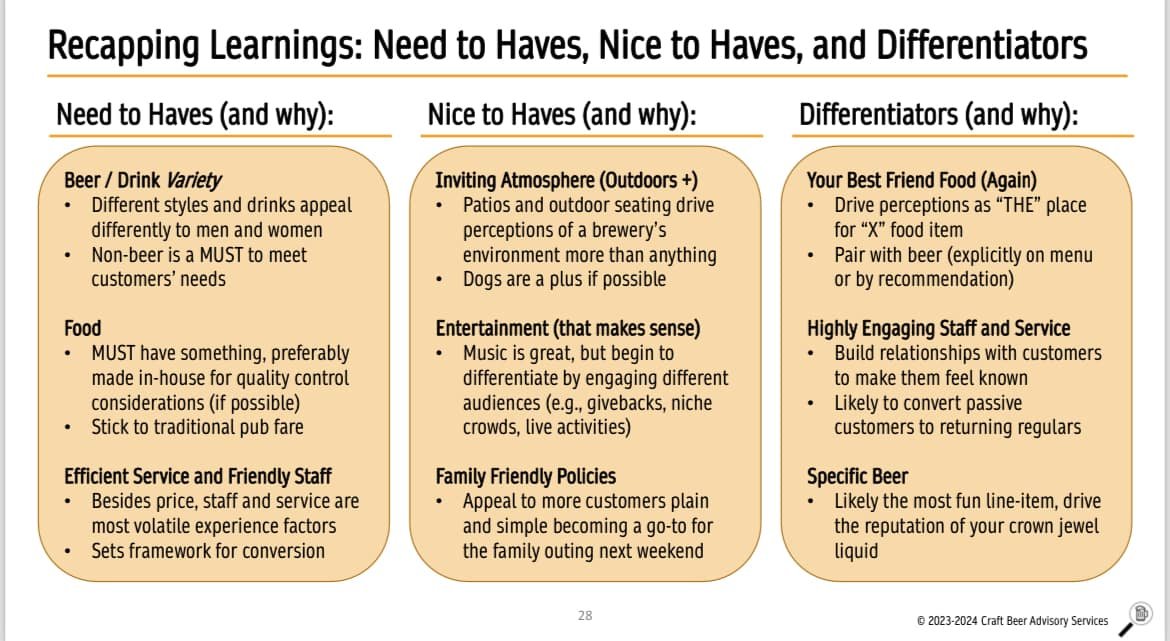Setting Your Taproom Apart from the Rest
There's really not much need to elaborate on the above graphic. Michael Varda, from Craft Beer Advisory Services, nails it. CBAS help breweries understand their customers in every way possible – why they visit, what they want, how to attract new customers, and how to use data to create experiences that keep them coming back.
At Secret Hopper, we love exploring factors that impact the customer experience, and Michael touches on several we've discussed in depth:
Beer is arguably still the anchor of our industry; however, taprooms must now diversify and offer additional beverages that appeal to broader audiences. Michael refers to this as a "need to have."
Speaking of broader audiences, guests are no longer just checking the "good beer" box. A successful taproom visit now includes much more, as we'll explore. Guests increasingly expect some sort of food offering, and our studies have shown that food visits generate tabs that are 88% higher.
Hospitality plays a major role, as highlighted in several of Michael’s points. Once a guest enters your taproom, your staff can make or break their experience. Currently, guests who receive high-level engagement spend 40% more than those with low-level engagement.
Guests are also drawn to your vibe. What sets your space apart? Is it super dog-friendly? Do you feature live music? Is it inviting for families with kids? You can no longer—and never should have—been simply a "fun place with a welcoming atmosphere and great beer." We all aim for that. You need a specific differentiator that guests can easily share when recommending your taproom to others.
Your taproom can no longer have a singular focus. A decade ago, beer alone might have been enough to pay the bills. However, as Michael outlines, crafting the ideal taproom experience now requires constant attention and effort in understanding the factors that motivate guests to visit—and keep coming back.
Ask yourself:
How are you doing with the “need to haves”?
How about those “nice to haves”?
What are your differentiators?
How can you improve?
What will you do today?
